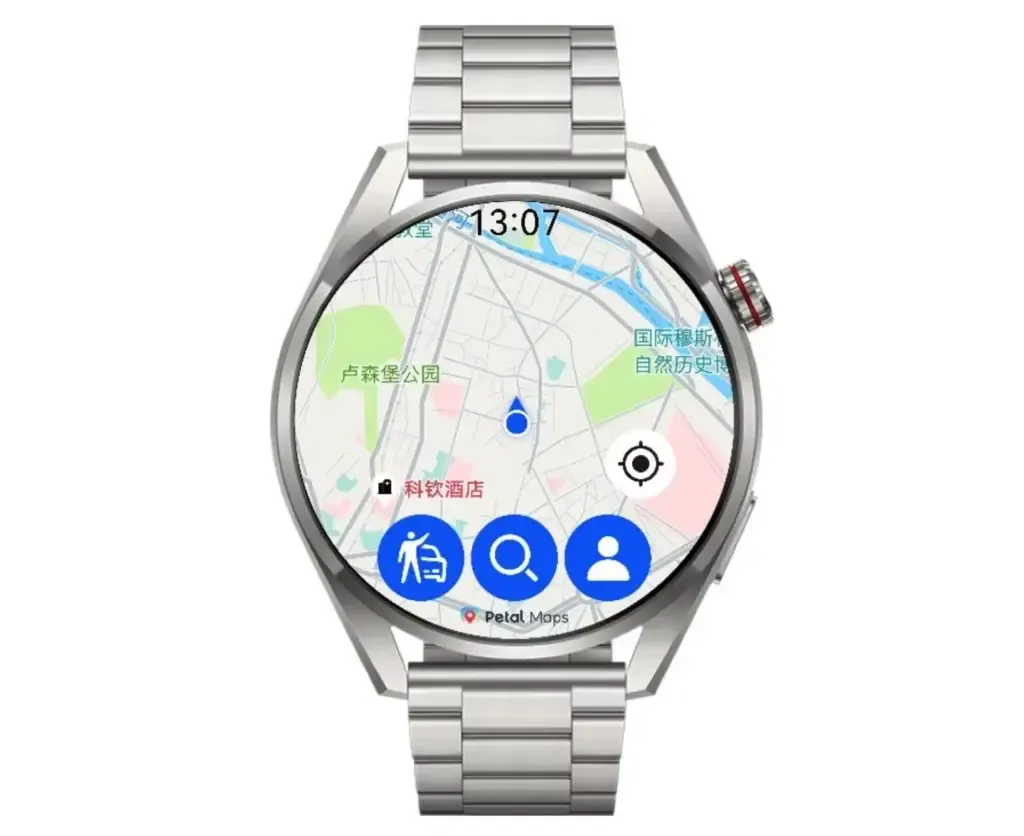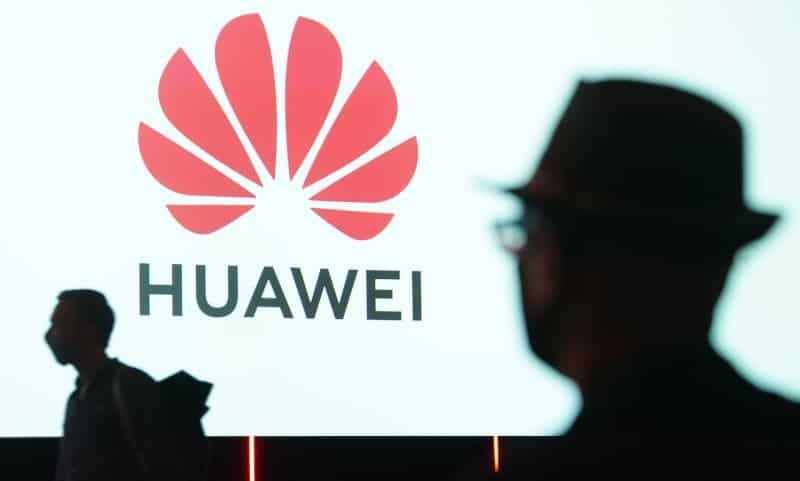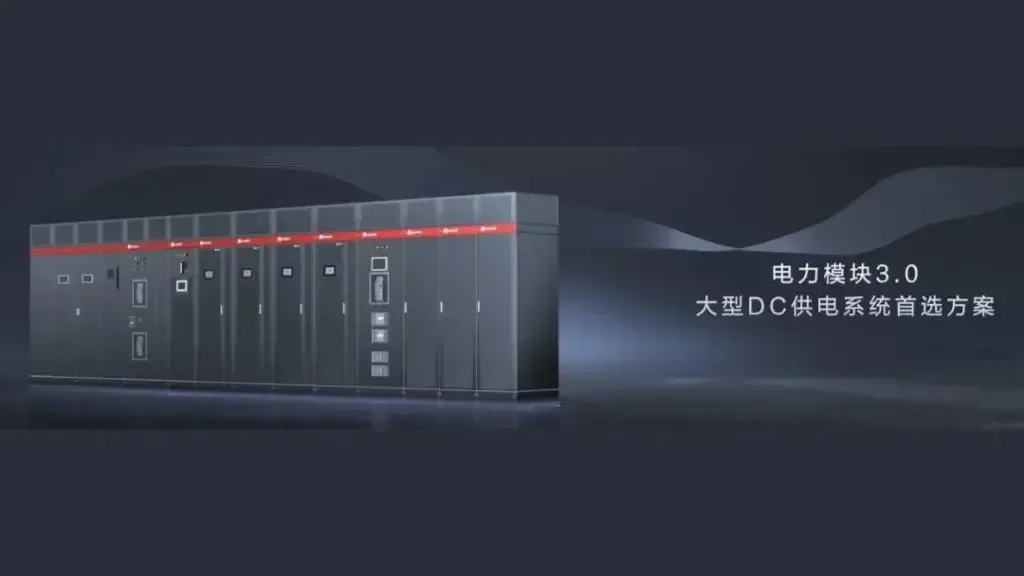Huawei recently upgraded the features of the Watch 3 Pro. The company adds a taxi-hailing function to the Huawei Watch 3 Pro. According to reports, users need to upgrade to the latest version of HarmonyOS 3. After upgrading, users don’t need a mobile phone to use this feature. Open the Petal Maps app on the watch and click the “Taxi” button in the lower left corner. This will help the user to complete the recommended pick-up point selection. Users can carry out destination searches, car model selections, and itineraries on the watch.

According to reports, Huawei Watch 3 Pro new supports independent communication and independent navigation. This is the first time that Petal's travel service has landed on watches. The company promises that this feature will launch on more smart watch series in the future.
Huawei says that the watch interface can display basic information such as license plate information, vehicle colour, and route information. It can also show details such as the driver's real-time location and travel time. In addition, the watch taxi supports the non-inductive payment function. When the user activates the Huawei payment password-free payment function, payment can be made automatically after the trip ends. You do not need to perform any payment operation.
Huawei completes 5G RedCap key technology field test
Huawei recently completed the R17 RedCap key technology field test in Huairou, Beijing. It did this together with the IMT-2020 (5G) promotion group. This test uses 5G commercial base stations and RedCap chips. The test reveals a peak downlink rate of 142Mbps and an uplink peak rate of 35Mbps. This is quite close to the theoretical peak.

As a lightweight 5G technology, RedCap achieves the best balance between performance and cost. It also fills the gap between the three major application scenarios of 5G eMBB, URLLC, and mMTC. It will become the best technology for carrying medium and high-speed IoT in the future. Since its inception, RedCap has attracted the attention of many industry partners. All parties in the industry have successively carried out 5G RedCap technical capability verification. They explore 5G RedCap application scenarios based on the verification results. Power terminals, security cameras, industrial sensors, and Internet of Vehicles services are expected to become the first batch of 5G RedCap commercial applications. It starts a new journey of 5G RedCap's billion IoT.
This field test is based on the 3.5GHz spectrum. It follows the specification requirements of the "5G Enhanced Technology R&D Test NR RedCap Key Technical Requirements". This is the standard by the IMT-2020 (5G) Promotion Group. The test results are in full compliance with the 3GPP standard protocol process. The performance is optimized on the basis of meeting the expected indicators. It lays the foundation for accelerating the commercial maturity of 5G RedCap.
Huawei claims that it will continue to promote the important standard work of RedCap. At the same time, it will continue to explore the application situations of RedCap. Huawei is also seeking to accelerate the large-scale deployment of RedCap networks.
Huawei Power Module 3.0 passed TÜV SÜD machine test
Huawei’s power module 3.0 passed the complete machine test of TÜV SÜD. This makes Huawei the first company to complete the 2.5MW machine test. TÜV SÜD is a world-renowned third-party testing and certification organization. It has decades of rich experience in data center field solution research. It is also part of the industry-standard formulation, product testing and certification. TÜV SÜD has a global expert network and advanced data center product testing. The organization has an authoritative testing and certification system.

Based on this, Huawei entrusted TÜV SÜD to conduct comprehensive and rigorous tests on the power module 3.0 2.5MW complete machine in a professional environment. After the testing, the results are quite positive. The system efficiency test shows that the full link of Huawei Power Module 3.0 is extremely efficient. Under different rated linear load conditions, the highest system efficiency is 97.8%. The highest value is as high as 98.3%. This is much higher than the link efficiency of traditional power supply solutions of 94.5%. This can effectively reduce power consumption. In the system mode switching test, the power module 3.0 supports 0ms switching between all modes. When the bypass input is abnormal, the intelligent online mode can switch to double conversion mode or battery mode. This is to ensure uninterrupted operation of the data centre.
TÜV SÜD conducts multiple tests
The Huawei power module 3.0 was subjected to multiple tests. Aiming at system reliability and maintainability, TÜV SÜD conducted a high-temperature test. The test results show that the system operates normally within the preset range of 0-40°C. The temperature rise of the system is far better than the standard requirements. Also, the test confirms the core components of the power module 3.0. It supports modular hot-swappable maintenance and replacement only take 5 minutes. It is quite easy and simple to maintain.

Huawei's power module 3.0 iPower has intelligent functions. This was revealed by the software function test. It supports full chain visualization, switch setting, AI low load and high temperature prediction. It also supports key part checks and switch health evaluation. With the presence of iPower, the power module 3.0 can monitor the temperature of the whole system. This enables it to predict the life of key parts. Thus, it can spot wearing parts such as capacitors and fans in advance. This will prevent problems before they happen. It will also improve the safety of the data center power supply and distribution system. The operation and maintenance have changed from "passive" to "auto".






Place comments
0 Comments
You are currently seeing only the comments you are notified about, if you want to see all comments from this post, click the button below.
Show all comments